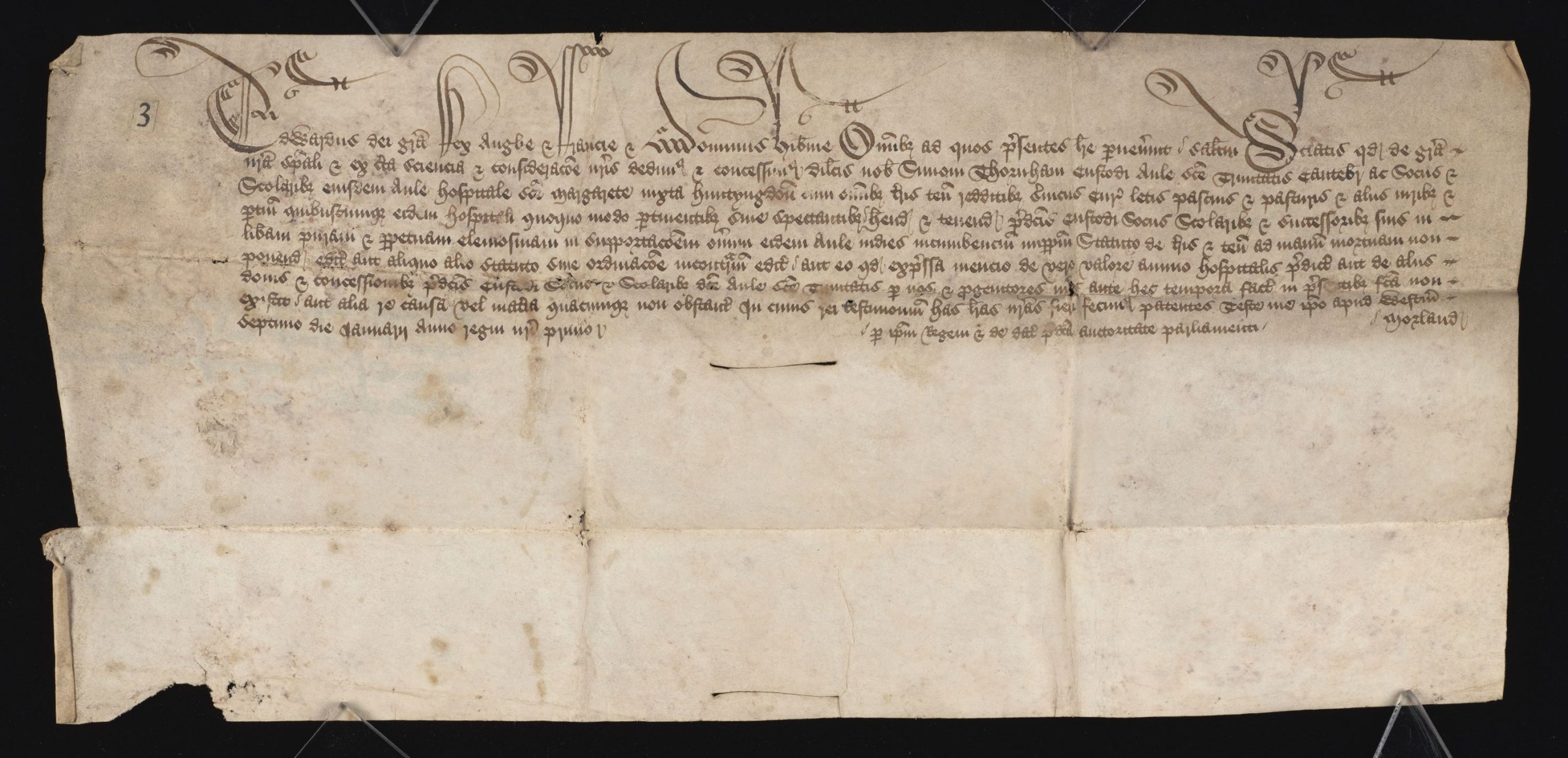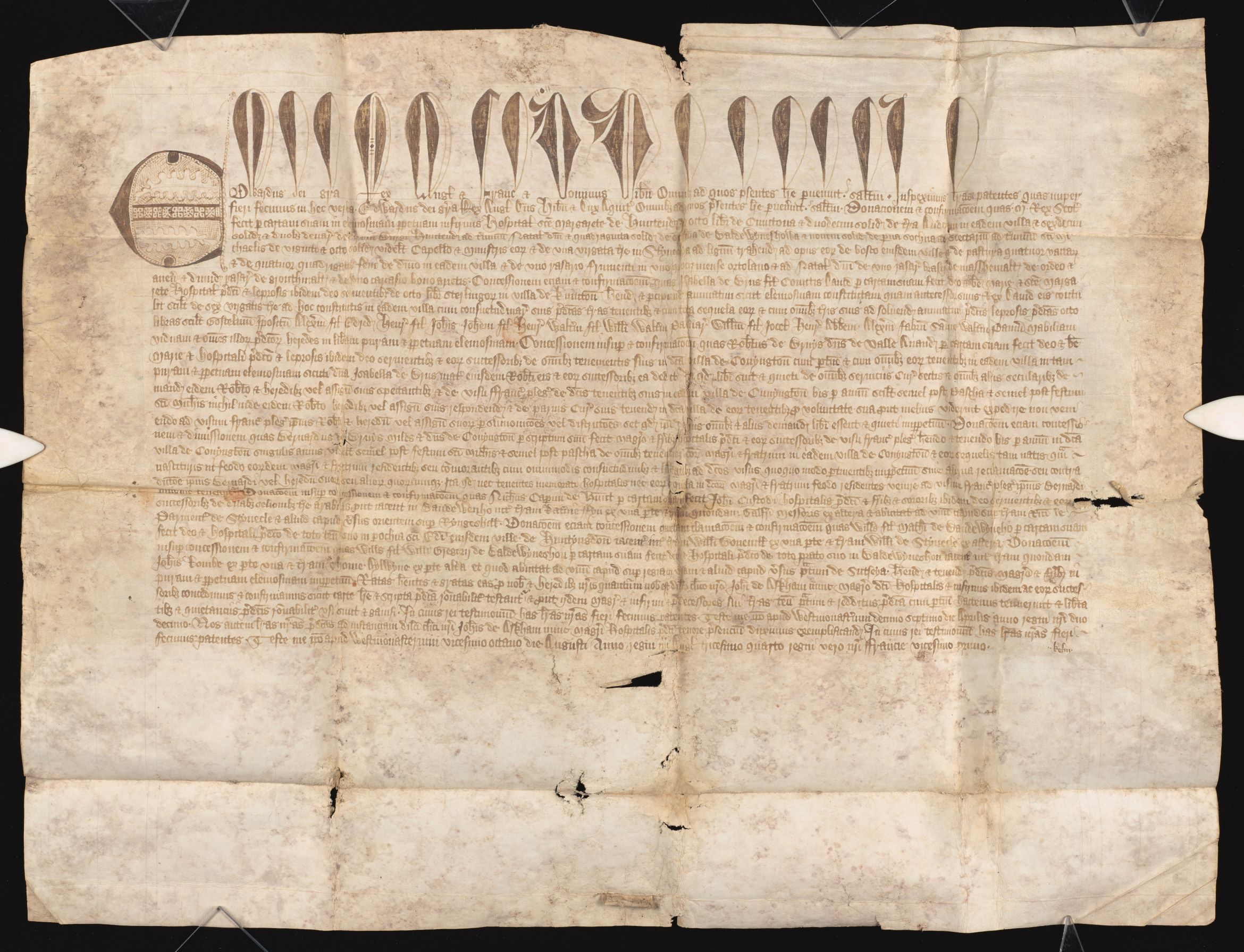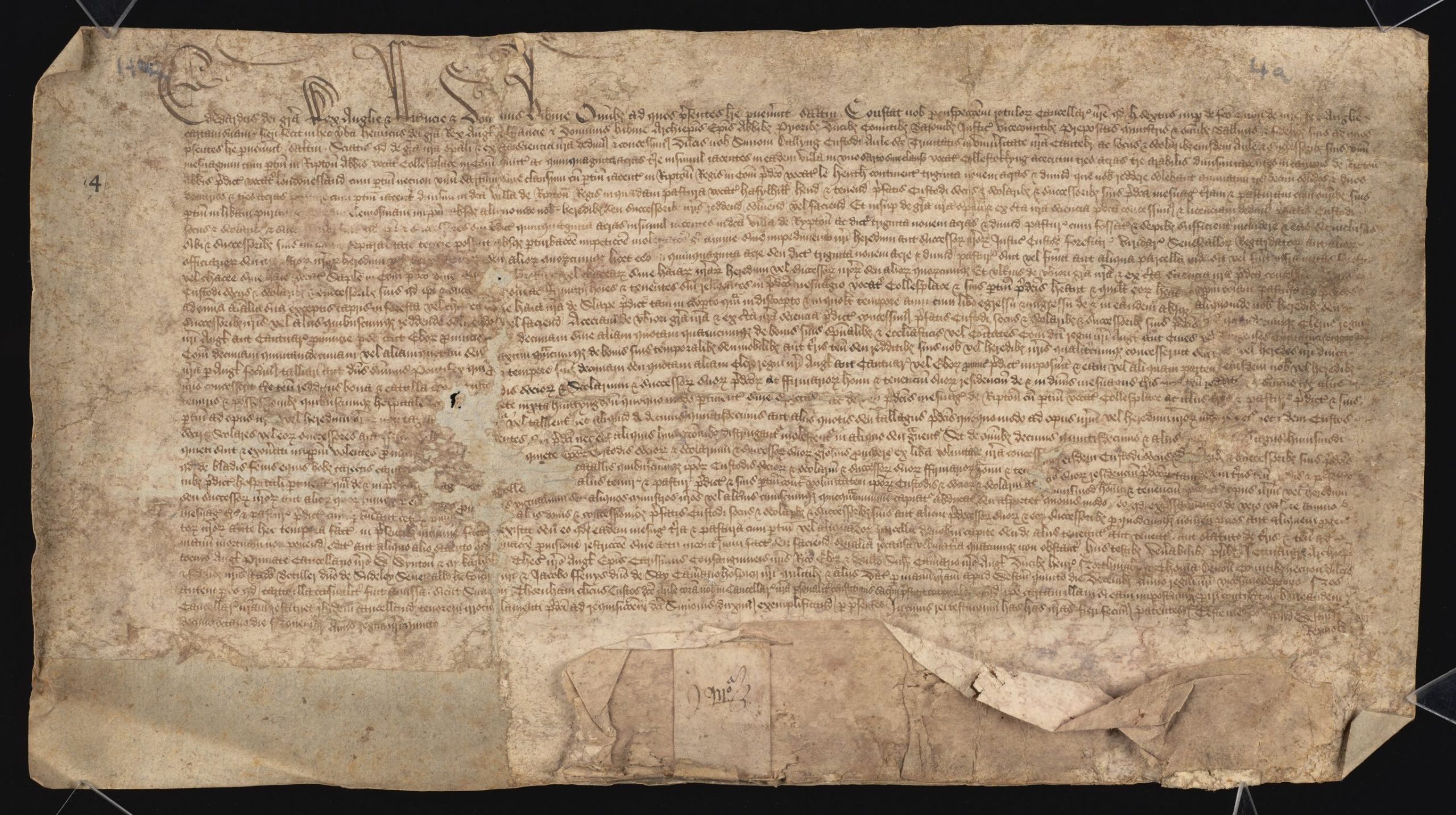Posted:
31 Jan 2023

THAR/8/9/2/1/3: 1461 Grant by Edward IV to the Master and Fellows of Trinity Hall of the hospital of St. Margaret’s near Huntingdon
In honour of World Leprosy Day (which is January 29th) let’s take a look at Trinity Hall’s own leper house, the hospital of St Margaret, Hungtingdon, and leper houses more generally in the middle ages. The hospital of St Margaret was founded for the purpose of treating lepers by Malcolm IV of Scotland (who was also the Earl of Huntingdon) sometime in the 12th century. In the 14th century during the First War of Scottish Independence, the hospital fell into the hands of the English monarchy. From this time onwards the masters of the hospital were the king’s clerks. However, by 1327 it had fallen into such poverty that they had to refuse admission of a leper who was sent to them by the king. By 1461, the hospital was no longer receiving patients or operating for its original purpose, and it was granted to Trinity Hall. The hospital and its lands were given to Trinity Hall as perpetual alms for the support of the inhabitants of the College.
Leprosy, now known as Hansen’s disease, is a complex bacterial infection that mainly affects the nerves, skin, and eyes. In extreme cases it can cause gangrene, blindness, the loss of extremities, and weakening of bones. Although it is treatable today, before the 20th century it was a life-long condition. Leprosy was present in England by the 4th century and became quite prevalent by 1050. Between the 11th and 14th centuries over three hundred leper houses were established in England. The attitude towards leprosy during the medieval period was generally sympathetic. Lepers were seen as holy and close to God. It was believed God answered their prayers more readily, so lepers and leper hospitals were popular recipients of charity.

THAR/8/9/2/1/1: 1355 Inspeximus charter confirming to the Master and the Brethren of the Hospital of St. Margaret in Huntingdon, sundry lands and payments given to it by various persons in Huntingdon.

THAR/8/9/2/1/4: Inspeximus charter of Edward IV of a grant by Henry VI to Trinity Hall, of a messuage in Ripton Abbas called Colleplace and exemption from all taxes and church dues in respect of the said lands and all other properties belonging to St. Margaret’s hospital near Huntingdon.